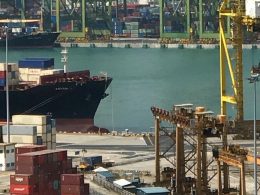
Emerging countries in Europe are expected to outpace their developed counterparts over the next two years, with Latvia, Poland, Romania and Slovakia leading 2012 GDP growth, according to The World Bank.
In its “EU10 Regular Economic Report,” the organization expects Romania to lead the way with 2012 GDP growth of 4.4 percent followed by Slovakia’s projected growth of 4.3 percent. Poland’s GDP is anticipated to grow by 4 percent this year and 4.2 percent next year. As domestic demand recovers, Latvia is set to produce a GDP of 4 percent by 2012.
Based on “low pre-crisis imbalances, deep integration into European production networks, European Union funds, and, in the case of Poland, solid consumption,” these countries should show solid growth, according to The World Bank.
The projections come with a hedge: the countries will have to tackle stagnant job growth, particularly among the young and unskilled, and make sure the financial sector remains stable.
To obtain the growth, The World Bank took into consideration monetary and fiscal policies. The organization expects monetary policy to remain accommodative, with a few central banks in the EU10 region already beginning the “tightening cycle of policy rates in response to increases in headline inflation and accelerating economic growth.” As for fiscal policy, EU10 governments have “embraced fiscal consolidation” and have already reduced deficits by lowering public wages and capital investments and raising taxes.
Monitoring these policies is an essential part of our investment process. For the Eastern European Fund (EUROX), we’ll continue to watch the actions of these promising countries to determine potential opportunities over the next two years.
Foreign and emerging market investing involves special risks such as currency fluctuation and less public disclosure, as well as economic and political risk. By investing in a specific geographic region, a regional fund’s returns and share price may be more volatile than those of a less concentrated portfolio. The Eastern European Fund invests more than 25% of its investments in companies principally engaged in the oil & gas or banking industries. The risk of concentrating investments in this group of industries will make the fund more susceptible to risk in these industries than funds which do not concentrate their investments in an industry and may make the fund’s performance more volatile.
The EU10 countries include Bulgaria, the Czech Republic, Estonia, Hungary, Latvia, Lithuania, Poland, Romania, Slovakia, and Slovenia.
![]()













